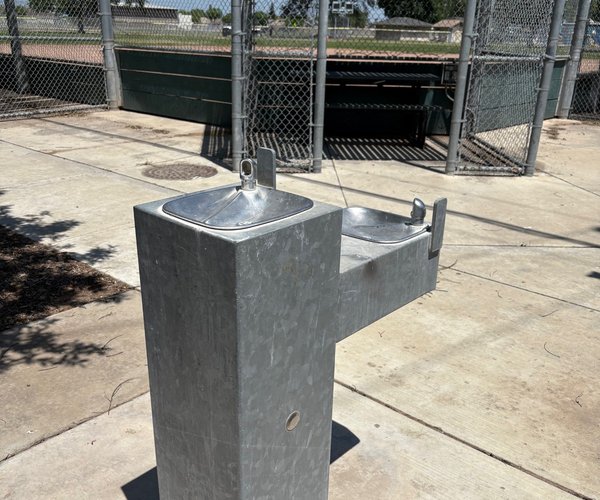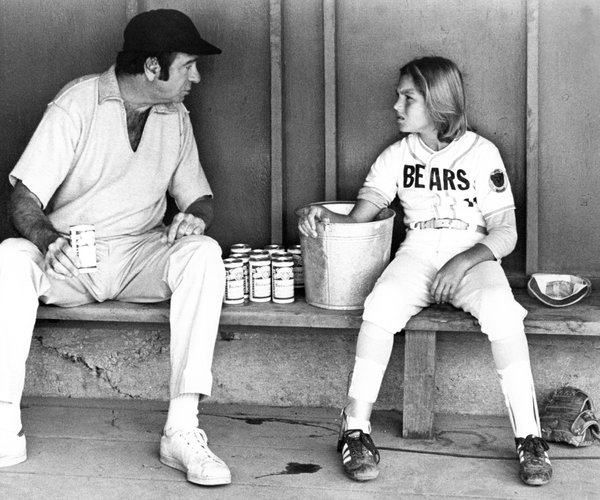If you were a kid in elementary school back in the early 1960s you likely had art lessons.
And one of the components of the art curriculum was to introduce young impressionable minds to ceramics.
It usually involved something that kids could give to a parent as a gift.
One popular choice for teachers that was relatively easy for young untrained hands to do was mold an ash tray out of clay.
You did not misread that.
A entire class of 33 second graders in a California public school used class time to fashion ash trays to hold burning cigarettes and to flick ashes into.
You were encouraged to adorn them with whimsical designs If that was within your realm of skill sets. Most simply settled for just painting it in one color.
Imagine what would happen today if Little Johnny brought home a crudely molded ceramic ash tray in pink — the color of breast cancer awareness campaigns — inscribed with the words “I love you” right where a smoker would smash a cigarette butt.
The outrage would be instantaneous.
Facebook, Instagram, and TikTok would blow up in minutes.
Opportunistic political hacks across the spectrum would be screaming for the firing of the teacher, the principal, the superintendent, and the school board.
How could schools, after all, promote cigarette smoking of all things?
No teacher in their right mind would have students today fashion an ash tray as a ceramics class project.
But there are still a few sixth grade classes hanging on to an art project of sorts that represents a horror that arguably is more horrific than cigarette smoking in terms of being associated with death.
That project is sixth graders making dioramas of one of the 21 Spanish missions in California.
The reason why most California schools have moved away from the mission project has everything to do with what schools glossed over for generations.
Before Europeans arrived, there were an estimated 300,000 or so indigenous people living in the 163,696 square miles that today constitute California.
While the missionaries “saving the souls” of natives by basically enslaving them predates California being a territory of the United States and gaining statehood in 1850, discriminatory treatment against indigenous Californians did not end on Sept. 9, 1850 when California joined the union.
The very event that provided California express lane statehood ratification in Congress and provided the foundation for its economy — the Gold Rush — also brought about the California Massacre.
Peter Burnett — California’s first governor — proposed a war of extermination against indigenous Americans.
“That a war of extermination will continue to be waged between the races until the Indian race becomes extinct must be expected,” Burnett told legislators in the second state of the state address in 1851. “While we cannot anticipate this result but with painful regret, the inevitable destiny of the race is beyond the power or wisdom of man to avert.”
Burnett then lit the proverbial fire.
The governor set aside state money to arm local militias against indigenous Californians.
Weapons were distributed to local militias for the expressed purpose of killing native people.
Local governments placed bounties on the heads of indigenous Californians.
A skull — or scalp — was worth $5 in California during the 1850s and 1860s. That was when the average daily wage was 25 cents.
At one point, the United States Army joined in the massacre by killing at least 1,600 indigenous Californians.
Historian Benjamin Madley determined from research the State of California spent $1.7 million in the 1860s to essentially kill indigenous people. Based on inflation that is $60 million in today’s dollars.
Indigenous Californians had their lands taken away, were forced into what for all practical purposes were concentration camps of sorts, had their murders not just sanctioned by the government but their murderers financially rewarded, and have been subjected to 180 years of poverty.
A morality play, if you will, played out 197 years ago on the soil near present day Ripon in thick riparian woodlands of which a remaining sliver still stands today at the end of Austin Road south of Manteca within the confines of Caswell Memorial State Park.
The main “character” was Cucuncuhi, a Yokut who belonged to the Lakisamni tribe.
Estanislao, as the Franciscan friars of the Mission de San Jose baptized Cucunuchi, led an uprising in 1827 of indigenous Californians against the Mexican government. Their stronghold was the present day southern San Joaquin County and northern Stanislaus County, along the Stanislaus River that is named for Estanislao.
In 1821, based on mission records we know Cucunuchi, his wife, daughter and mother were “invited” by friars who ventured to this area to return with them to the San Jose mission.
They taught Estanislao Spanish and made him a foreman of various indigenous Californians that were — even by modern-day assessments by those in the corner of the friars doing “the right thing” — semi-slaves or endured semi-serfdom.
Today, apologists insist whatever wrong was done it was for a greater purpose. The “I did it for them” defense rings more than a tad hallow given it was based on the assumption there is only one way to worship and only one way to be civilized.
The Yokuts certainly were civilized even having sea shells as currency to trade with coastal peoples.
As for them being taught to feed and clothe themselves it conveniently ignores the Yokuts had been doing that for centuries in harmony with California’s natural bounty.
And if the mission life was so great why did Estanislao and others escape?
Could it be many died while “serving” the mission whether it was from the often brutal labor that was clearly forced in more than a few instances and from European diseases and the fact they were no longer free?
Estanislao organized other Yokuts and led raids on the missions in San Jose, Santa Cruz, and Santa Clara as well as Mexican settlers near the Stanislaus River.
Ignore the Hollywood version of “Indian” raids depicting what took place outside of California. Estanislao and his men didn’t burn buildings and fields, carry off women and children, and scalp men. They drove off horses and killed them for food.
It should be noted historians indicate not a single life was lost in the raids. Nevertheless the Franciscan friars and Mexican settlers wanted the “Indian problem” taken care of.
They persuaded Governor Jose Marino Escheandia to send the Mexican army to kill or capture Estanislao.
After three excursions by troops from the Presidio of Monterey and the Presidio of San Francisco into Estanislao’s stronghold along the Lower Stanislaus River from the grape vineyard nestled against the confluence with the San Joaquin River and present-day Ripon failed, the Mexican army assembled a larger force to go after Estanislao, who had amassed 4,000 others in defense of their home.
It was led by General Mariano Guadalupe Vallejo, complete with modern-day weapons of the era that included a cannon. They finally ousted Estanislao and his forces from the Lower Stanislaus River in 1829.
Early Californians historians noted that in the aftermath six Yokuts were captured. Four of them were brutally executed on the battlefield including one that died who had 73 arrows and a gunshot to the head.
How was this act of savagery addressed? An investigation into the execution of the captives ordered by the governor found a soldier by the name of Joaquin Alverado guilty. His sentence was five years of additional military service.
Last month, thanks to Assemblymember James Ramos, Gov. Gavin Newsom signed a law that goes into effect Jan. 1 requiring schools to teach about the mistreatment and perspectives of Native Californians in social studies classes.
Doing so is an admission that we don’t always get things right in public school curriculum whether it is the open embracing of cigarette smoking with a second grade art project or glossing over history that reflects unfavorably on the State of California.
This column is the opinion of editor, Dennis Wyatt, and does not necessarily represent the opinions of The Bulletin or 209 Multimedia. He can be reached at dwyatt@mantecabulletin.com






